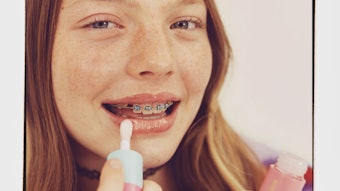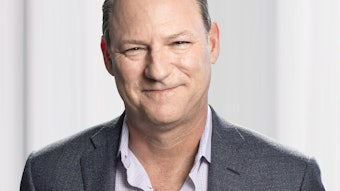
For insider perspectives on hair care innovation, we asked industry experts for their observations on current and future trends and directions. Following are insights from: Sam Shefer, Ph.D., Salvona Technologies; Brian Freedman, Evolved by Nature; Kacey Brides and Giada Maramaldi, Givaudan Active Beauty; Kumpal Mehta, TRI-K Industries; Vincent Miralles, Syensqo; Johan Jansen-Storback, IFF; Kara Keene, DSM-Firmenich; Henrique Marconi, Chemyunion; and Donna Petretti, Croda Inc.
The hair care industry is undergoing a transformation, driven by innovation and increasing consumer knowledge. As individuals become more aware of their unique hair needs and desired (or undesired) ingredients, brands are responding with tailored solutions that enhance hair health.
As reported by Statista,1 the global hair care market is projected to generate US $96.82 billion in 2025 and is anticipated to expand at a CAGR of 2.69% from 2025-2030. Companies like Function of Beauty and Prose are leading the charge by enabling consumers to customize shampoos and conditioners based on specific hair profiles, reflecting a broader move toward personalized beauty solutions.
Sustainability is another integral aspect of today’s hair care. Explorer Research,2 for example, highlighted sustainability as an important consideration for consumers in skin care (in 31% of shoppers), hair care (in 30%) and beauty products (in 25%).
PWC found3 that some consumers are willing to spend 9.7% more, on average, for sustainably produced or sourced goods in general; even under the weight of cost of living pressures. This growing awareness is prompting brands to innovate with eco-friendly formulations and packaging, redefining traditional hair care standards.
MD Hair4, a brand offering custom hair growth treatments, additionally highlighted the skinification of hair care trend. “...[W]e are now paying more attention to the condition of our scalp and using specific products and techniques to keep it healthy and nourished,” the source stated.
In relation, MD Hair highlighted eight key trends in hair care for 2025, as reported by dermatologists:
- Effective treatments for hair loss,
- Customized scalp and hair treatment routines,
- Gentle, sulfate-free shampoos,
- Drug-free treatments for dry and sensitive scalp,
- Reducing scalp product build-up,
- Massaging the scalp with gentle active shampoos and serums,
- Active conditioners for strength, elasticity and shine, and
- Preventing and reversing premature graying.
For insider perspectives on hair care innovation, we asked industry experts for their observations on current and future directions in hair care innovation. Following are their responses.
Deeper Delivery and Bond Building
According to Sam Shefer, Ph.D., president of Salvona Technologies, current hair trends for 2024-2025 include scalp health and skinification. “Consumers now treat the scalp like facial skin, fueling demand for targeted, skin-grade treatments,” he writes.
Another trend he sees is damage repair and bond-building. “[There is] strong interest in products that repair internal hair structure, such as bond builders and protein treatments.” Lastly, there is a move toward hair growth and anti-hair loss, reflected in the surge in topicals, serums and supplements aimed at reducing hair shedding and boosting regrowth.
In terms of future trends and opportunities, Shefer points to the follicular delivery of bioactives for the “deeper delivery of active ingredients to the follicle to enhance hair growth, density and vitality.” There is also a scalp-as-skin evolution, with the “rise of clinical-grade actives like peptides, prebiotics and neurocosmetics for advanced scalp care,” he notes.
Finally, Shefer believes fragrance retention is an untapped area for hair care innovation. “There is a growing demand for fragrance technologies that offer long-lasting, multi-sensory experiences," he explained.
To enable these key market directions, Shefer underscores encapsulation and delivery systems. “Submicron spheres enhance follicular penetration and stabilize sensitive actives (e.g., peptides, caffeine, ceramides),” he writes. “Salvona’s technologies enable deep delivery to the hair root, supporting hair growth, pigmentation and long-term rejuvenation.”
Biomimetic and bioengineered actives, designed to mimic biological processes, also target the follicle “to promote regeneration, balance the microbiome and address inflammation and hormonal shifts,” per Shefer.
To support long-lasting performance, he adds, “Salvona’s hair coating and systems help maintain style all day - keeping hair light, smooth and protected from humidity, heat and UV exposure."
Personalized and Multifaceted Ingredients
Brian Freedman, regional director of natural ingredients in North America for Evolved By Nature sees four key market trends in today’s hair market. First, personalization: “Customers want hair care products designed for their specific type of hair and their specific needs,” he writes. “A one-size-fits-all approach no longer cuts it, especially in the prestige+ segment.”
Freedman also sees the emergence of skinification in hair care products. “Customers are increasingly looking for hair care products that feature ingredients traditionally found in skin care products like HA, niacinamide and peptides, which can help with hydration, shine and improve scalp health,” he explains. “There’s also an increased focus on products that protect and repair hair and promote overall hair and scalp health.”
Finally, Freedman believes clean and sustainable products are still a driving force. “Customers want fewer ingredients, and ones which are safe and gentle for their hair and scalp, as well as the environment,” he notes.
Looking ahead, Freedman sees an opportunity in multifunctional personalization. “Think: AI-developed formulas that are designed to maximize the efficacy for specific hair types,” he writes. “Another trend could coalesce around multifunctional ingredients that address several needs at once while improving formulation efficiencies,” he adds.
Supporting these trends, Freedman highlights Evolved By Nature’s biotechnology-driven solutions. “We view our Activated Silk biotechnology as a versatile platform designed to meet the evolving needs of consumers and the industry,” he states. “For instance, our newest ingredient to come from the ... platform is Activated Silk Hydrogels, which represents a new class of active ingredients designed to repair, protect and hydrate where traditional ingredients fall short.”
Freedman reports the Activated Silk Hydrogels are a prime example of a multifunctional ingredient, supporting hair repair and styling, delivering lasting hydration and actives to the skin, and helping brands reduce COGS by streamlining formulations – since they act as both an emulsifier and an active.
Hair Health and Scalp 'Interabiome'
For Kacey Brides, strategic marketing manager, and Giada Maramaldi, global category manager, both of Givaudan Active Beauty, skinification leads the charge.
“The hair care market is increasingly resembling skin care by providing targeted solutions for specific concerns and hair types,” they write. “Products promoting hair health while addressing root causes of damage evolve. Consumers understand that hair health starts at the scalp, leading to a focus on scalp care and the microbiome.”
They added that consumers will seek high-performance products tailored to individual scalp conditions, adapting to environmental factors, life stages or health issues. “It's important to destigmatize discussions about these common concerns,” they note.
According to Brides and Maramaldi, moving forward, consumers have an eye toward sustainability and mildness. “Knowledgeable consumers are seeking products that effectively address common concerns while prioritizing gentle formulations and sustainability,” they note. “There is an increasing expectation for solutions combining the benefits of nature and science, which is crucial for a responsible future.”
Authenticity is emerging as a benchmark for inclusivity, per Brides and Maramaldi, making it essential to genuinely address previously taboo conditions and normalize these discussions.
To enable future market directions, they look to Givaudan Active Beauty’s new DandErase product, which they describe as a "pioneering" in the anti-dandruff category, addressing consumer expectations for natural, ethical and microbiome-friendly products. They explained that it harnesses the power of nature, using potent molecules from crocus flowers such as flavonoids and kinsenoside to combat dandruff.
“…[It] promotes a healthier scalp environment and selectively targets Malassezia. This holistic approach reduces dandruff, but also enhances overall scalp well-being, meeting the growing demand for effective and gentle personal care solutions.” Per both, it embodies the concept of interabiome, focusing on interactions among microorganisms for optimal balance and health.
Longevity and Lasting Effects
According to Kumpal Mehta, technical marketing manager of hair care for TRI-K Industries, longevity and scalp health are making waves in hair.
“Two key trends in hair care are personalization and hair longevity, with a growing focus on scalp health,” Mehta writes. “Consumers are moving away from one-size-fits-all products and increasingly seek solutions tailored to their unique needs. In response, brands are offering more customized options, with some leveraging AI to deliver truly personalized experiences.”
Mehta adds that interest in hair longevity reflects a rising awareness of the link between scalp and hair health. “As consumers prioritize long-term care over quick fixes, they are becoming more mindful through comparing products, evaluating efficacy and making informed decisions before purchasing.”
Per Mehta, as interest in hair longevity grows, the market can expect to see more innovation in long-term solutions. “Products that deliver lasting benefits over multiple washes and genuinely restore hair integrity remain limited, presenting a strong opportunity for new ingredient development,” Mehta writes.
“Personalized solutions for different curl patterns are gaining traction, but there’s still room to improve efficacy," Mehta continues. "Scalp care needs vary by concern and age, and there is potential to innovate products that are designed for different age groups and their hair and scalp needs.”
Enabling these market dynamics, Mehta points to protein power. “Peptides and hydrolyzed proteins that are designed to penetrate the hair and strengthen the protein integrity of the hair fiber will be at the forefront of delivering healthy hair,” Mehta explains.
“EverBond, a hydrolyzed protein from TRI-K, is designed to restore broken disulfide bonds and increase protein integrity for bleached hair. This ingredient not only meets the need for hair longevity, but also supports personalization by allowing consumers to continue to color-treat and bleach their hair without having to worry about severe damage.”
Biotech Powered and Internal Mechanisms
Vincent Miralles, global segment director for hair care at Syensqo, sees consumers focused on eco-solutions and health.
“Current market trends in hair care are shaped by consumer preferences for environmentally friendly and health-conscious products," Miralles explains. “Responsible beauty is on the rise, with a demand for bio-sourced and biodegradable ingredients that do not compromise on performance.”
He also adds that the free-from trend reflects a shift toward sulfate-free and silicone-free formulas. And that the desire for personalized solutions is fueling the trend for customized beauty, with products tailored to address specific needs and claims such as anti-frizz solutions and split-end repair.
“In the near future, [these] trends … are expected to extend into scalp care. Consequently, scalp health and biotechnology have become increasingly significant in the development of new hair and scalp care ingredients,” Miralles writes.
“In early 2025, Syensqo announced a strategic five-year partnership with a leading global industrial biotechnology company known for its bio-manufactured, clean and high-performance consumer products. This … highlights Syensqo’s commitment to leading the bio-revolution by expanding its portfolio of renewable and biotechnology-enabled solutions.
"Leveraging artificial intelligence capabilities to bridge a chemical functionality with a biological activity will also be instrumental for scalp care,” he continues.
According to Miralles, Syensqo will leverage advanced performance protein technology to drive innovation in hair and scalp care, addressing key concerns such as internal hair repair and hair growth.
“By developing high-performance biomimetic ingredients, Syensqo builds on its 40 years of expertise in hair care and its increasing focus on scalp care. Dedicated application development will further accelerate the creation of market-ready solutions, utilizing technologies from recent acquisitions, such as ceramides and rosemary extracts, to enhance hair and scalp care offerings.”
Function-led and Nighttime Care
“The hair care market is currently driven by trends such as skinification, where skin care ingredients and routines are being incorporated into hair care products,” shares Johan Jansen-Storback, director of personal care for IFF.
“Consumers are increasingly seeking products that offer hydration, nourishment and protection for both hair and scalp. Additionally, there is a growing demand for sustainable products, which is driving innovation in bio-based and biodegradable ingredients.”
According to Jansen-Storback, future trends are expected to focus on function-led hair care with an emphasis on multifunctionality. “Consumers will look for products that offer multiple benefits in one, such as ... cleansing, conditioning and treatment properties.
"This trend will also extend to nighttime hair care products and bridge the gap between salon and at-home treatments," he continues. "There is significant potential in products that prioritize innovation and sustainability without compromising performance.”
Technologies advancing innovation in hair care include designed enzymatic biopolymers (DEB), Jansen-Storback notes, which is what IFF used to develop its Aurist AGC hair conditioning biopolymer.
“…[DEB] is poised to transform the hair care industry. [It] is a biotech platform, proprietary to IFF, where enzymes are used in a mild, biocatalysis process to create a new-to-the-world class of alpha-glucan polysaccharides through the enzymatic polymerization of glucose,” he explains.
“These alpha-glucan polysaccharides can then be designed and customized to meet desired performance needs and product specifications for [given] applications." Jansen-Storback adds that Aurist AGC improves key performance aspects like hair conditioning, but also hair manageability, gloss and sensoriality, making it a key ingredient for multifunctional hair care formulations.
Sophistication and Senolytics
Kara Keene, marketing communications manager for DSM-Firmenich, also highlights the tech transfer from skin care into hair care. “… Hair care is following the trends we see in skin care – a desire for natural and sustainable ingredients that are also sophisticated, scientifically backed solutions that address concerns like anti-aging and scalp health.”
She cites In-cosmetics Connect, which reported 36% of hair care professionals worldwide have looked for relevant applications and active ingredients, while 67% of global consumers are looking for eco-friendly products. “Science is leading and data is key,” she writes.
“We [also] see a focus on scalp and hair health and longevity – a focus that goes beyond [the] current wash cycle, to longer-term scalp and hair health and longevity.” In relation, per Keene, DSM-Firmenich, with its expertise and capabilities in hair senolytics, developed Eterwell Hair.
“[The ingredient is] an innovative solution that reprograms hair cells by reducing the number of harmful ones and supporting the healthy function of the remaining cells, bringing new life and greater longevity to the scalp and hair,” she explains.
“Eterwell Hair is the first and only solution tested on hair follicles using an exclusive model for hair senescent cells,” she adds. “It performs well in a wide range of applications, with 100% natural and ethically sourced bioactives.”
Skinification and Climate Adaptive
“Hair has evolved into an extension of the skin. And climate has become its fiercest enemy,” writes Henrique Marconi, global product manager for Chemyunion. “With the rise of skinification, consumers now demand more than just aesthetics: they seek performance, protection and sensory excellence.
“Global warming and urbanization are accelerating the need for climate-adaptive formulas - like anti-frizz serums and UV-shielding sprays - that offer resilience against environmental exposure and stability in volatile conditions,” he continues. “This is where geo-hair care steps in: smart, climate-responsive solutions that adapt to humidity and deliver melt-proof hold.”
In terms of future market dynamics, Marconi points to biotech and environmental consciousness. “The next frontier lies at the convergence of biotechnology and sustainability,” Marconi explains. “Hybrid products that treat (or prevent) damage, style and protect against environmental stressors – including pollutants and metal ions found even in shower water, an often-overlooked threat – are gaining attention.”
He adds that there is vast opportunity in intelligent fiber-shielding technologies that go beyond masking damage, delivering long-lasting repair and true multifunctionality. “Growing interest in scalp and hair health is driving strong uptake across NAM and APAC, while EMEA leads innovation in climate-conscious styling.”
Innovations supporting these future trends include Polluout Detox. Per Marconi, “it forms a shield that prevents the accumulation of metal ions like calcium, magnesium and copper (commonly found in hard water and pool environments), while providing proven anti-pollution and oxidative stress protection. It also enhances the performance of subsequent treatments, including hair coloring.”
Another technology is the company’s new Hidrahair Seal SE MB, a biotech solution that reportedly instantly repairs 97% of split ends. “Its bioadhesive film resists high humidity, seals ends for up to 48 hr and boosts resistance to brushing by up to 4.2x,” Marconi explains. “Clinically tested on diverse hair types – Caucasian, Asian and kinky – it embraces the global spectrum of hair textures.”
Textured Hair and Scalp Health
Lastly, Donna Petretti, head of marketing and digital sales for Croda Inc., highlights advances in the textured hair sector. "The textured hair movement, which embraces natural waves, curls and coils, goes beyond aesthetics — it’s deeply tied to scalp health," she writes. "As more people embrace their natural texture, intentional scalp care has gained prominence, a practice long ingrained in textured and coily hair communities."
She adds that due to the unique structure of textured hair, its twists and bends make it more susceptible to dryness and fragility, as natural oils struggle to travel from the scalp to the ends. "This highlights the importance of maintaining a well-balanced scalp microbiome, which supports stronger, shinier strands while helping to prevent concerns like dandruff, inflammation and breakage."
According to Petretti, looking ahead, greater attention will be paid to the connection between the scalp and hair fibers, "paving the way for root-to-tip solutions, eco-friendly product innovations and a deeper commitment to inclusivity in beauty standards," she explains.
Enabling these directions, Petretti points to Croda's Sphingo’HAIR Drypure, a bio-fermentation derived ceramide NP that replenishes the skin with essential longer chain ceramides, and promotes healthy scalp and hair barrier structures.
Pre-clinical and clinical evaluation conducted with Sphingo’HAIR Drypure demonstrated significant impacts on:
- Regulation of pro-inflammatory cytokines, heat-activated channels and atopic skin markers;
- Scalp reinforcement with increased hydration, reduction of irritation and flaking; and
- Optimal hair moisture, cuticle smoothing, increased hair shine and softness.
"This skin biomimetic ingredient is 100% natural origin content according to ISO16128 standard, COSMOS approved and IECIC compliant," Petretti notes.
Conclusions
Not surprisingly, it seems the overwhelming majority of this group of experts believes the path forward in hair care innovation is led by hair and scalp health, enabled by the skinification of hair products. Exactly how – or how well – a brand or innovator achieves such will be the major differentiator in a crowded market space.
References
- Statista. (Accessed 2025, May 2). Hair care - Worldwide. Available at https://www.statista.com/outlook/cmo/beauty-personal-care/personal-care/hair-care/worldwide.
- Chhabra, J. (2024, May 16). How beauty brands are embracing eco-friendly practices. Explorer Research. Available at https://explorerresearch.com/sustainable-beauty-how-brands-are-embracing-eco-friendly-practices/.
- PWC. (2024, May 15). Consumers willing to pay 9.7% sustainability premium, even as cost-of-living and inflationary concerns weigh: PwC 2024 Voice of the Consumer Survey. Available at https://www.pwc.com/gx/en/news-room/press-releases/2024/pwc-2024-voice-of-consumer-survey.html#:~:text=More%20than%20four%2Dfifths%20(80,%2Dliving%20concerns%2C%20among%20others.
- Harth, Y. (2025, Mar 11). Hair care trends in 2025 - According to dermatologists. Available at https://www.mdhair.co/article/hair-care-trends-in-2023-according-to-dermatologists.













